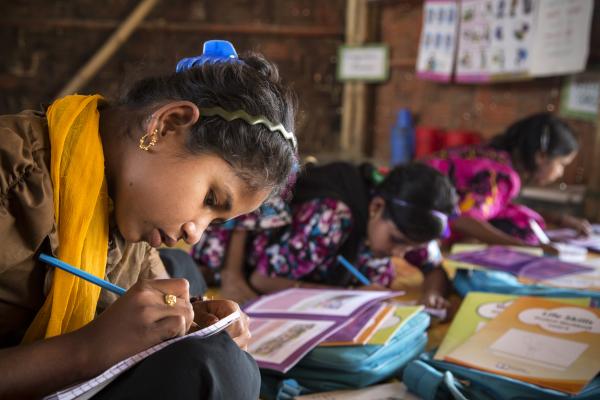
You've found the best kids reading games that will inspire your child to love reading. These games can help your child to practice reading correctly with proper pronunciation and intonation. They will also help your child to stay focused and alert when reading. There are many options for reading games for children. They all work in different ways.
BOOKR Classes
BOOKR class is a software program that makes reading more fun for children. Whether your student is just starting out in school or has been struggling for years, BOOKR Class makes the learning process fun and easy. The software is free and available on a monthly subscription basis. For families and schools, there are subscription options.
BOOKRClass has many features that can help children improve reading skills. You can arrange content according the child's level and interests. BOOKR Class also offers special back-to-school promotions. Subscriptions to this software cost 99 EUR. That's equivalent to $117 US.

Alphabet Bubble
Alphabet Bubble helps kids learn the alphabet. Children can learn the order of the letters and practice spelling words by popping the letter bubbles. The timer can be set to tell them how long they must complete the game. The goal of the game is filling in as many letters as you can within the time limit. To make it more challenging for their children, parents may add a handicap.
This educational game is a hit with children. It teaches English numbers and alphabets. Children will be able to match the bubbles with the right words, and they will pop. After that, they will see the picture of each word. These activities will help them develop phonemic awareness and confidence when reading and spelling words.
Phonics is addictive
If you're looking for an app to help your child learn how to read, consider Hooked on Phonics for kids. This app has many benefits, including a free trial period and in-app purchases, as well as ebooks and subscription upgrades. It's a great way of reinforcing lessons that were taught at school. It could do with some updates to be more current.
Hooked on Phonics uses an interactive approach to teach reading to children, using song and spoken words, as well as games and interactive games. It includes downloadable worksheets and book suggestions. The program's four-step structure is intended to help children learn phonics and improve their reading skills.

Farfaria
FarFaria, an app for children, makes reading books enjoyable and accessible. It has thousands of books, from classics to recent releases. The audio narration is professional and word highlighting helps kids to improve their decoding skills. Parents can even personalize their child's reading level to make reading more engaging.
Parents and children will enjoy the library's selection of books, which is categorized by genre and reading level. This feature allows parents to choose books appropriate for their children and those that are more challenging. FarFaria offers parents a convenient tool to help them find books according to their reading levels, genre, or price.
FAQ
How much does homeschooling cost?
Homeschooling does not require you to pay a set fee. Some families charge between $0-$20 per lesson. Other families offer free services.
But homeschooling is not easy. It requires commitment and dedication. Parents must have enough time to devote to their children.
They should also have easy access to books, supplies, as well as other learning tools. Many homeschoolers have to make use of community programs and events in order to enhance their curriculum.
Parents should think about transportation costs, tutors, and other activities.
Homeschoolers must also plan ahead to take part in field trips, vacations, or special occasions.
Is it necessary to attend college in order to be an early childhood educator
However, you may want to think about going to college in order to be prepared for a career in the field.
It is important that you realize that being a teacher can be difficult. Every year, there are many applicants who aren’t accepted to programs. Many students also quit college after only one semester.
To become a teacher, you must also meet certain qualifications.
What are the main types of early education?
There are many ways that early childhood education can be described. The most common ones include:
-
Preschool - Children ages 2 to 5
-
PreKindergarten- Children from 4-6 years of age
-
Head Start/Headstart for Children Ages 0-3
-
Day Care/ Daycares - Children ages 0 to 5
-
Child Care Centers - Children ages 0 to 18
-
Family Child Care for Children Ages 0-12
-
Home schooling - Children aged KG to 16.
What's the purpose of education and schooling?
Education should be able to help students acquire the skills needed for employment. It is not just an academic pursuit but also a social activity where children learn from each other and gain confidence by participating in activities such as sports, music, and art. Education is about learning to think critically and creatively so that students can be self-reliant and independent. What does it entail to have high educational standards?
Good educational standards are those which ensure that all pupils achieve their potential. These standards provide clear guidelines for teachers to follow with their students. Schools can adapt to changing educational needs if they have good educational standards. Fair and equitable education standards must also be maintained: Every child is equal in terms of chance of success, regardless of his/her background.
What is the difference between a college and a university
A university can be described as an academic institution that offers higher education. It offers postgraduate and undergraduate courses in a variety of fields.
A college is typically smaller and less well-known than a university. It may offer fewer courses but often has its own specialist departments.
Statistics
- Globally, in 2008, around 89% of children aged six to twelve were enrolled in primary education, and this proportion was rising. (en.wikipedia.org)
- Data from the Department of Education reveal that, among 2008 college graduates, 92.8 percent of humanities majors have voted at least once since finishing school. (bostonreview.net)
- These institutions can vary according to different contexts.[83] (en.wikipedia.org)
- And, within ten years of graduation, 44.1 percent of 1993 humanities graduates had written to public officials, compared to 30.1 percent of STEM majors. (bostonreview.net)
- They are also 25% more likely to graduate from high school and have higher math and reading scores, with fewer behavioral problems,” according to research at the University of Tennessee. (habitatbroward.org)
External Links
How To
what is vocational education?
Vocational Education is an educational system that prepares students for employment after high school or college by providing them training in specific skills needed for a particular job (such as welding). This includes apprenticeship programs and on-thejob training. Vocational education is different from general education in that it prepares individuals for specific career paths rather than acquiring broad knowledge for future uses. Vocational education does more than prepare for university. It helps people find jobs after graduation.
Vocational education can be offered at any level of schooling: primary, secondary, college, university, technical institutes and trade schools. Many specialized schools are available, including nursing and culinary schools, law schools medical and dental schools, veterinary medicine school, veterinary medicine schools, firefighting training schools, police academies, military academy, and other military schools. Many of these schools offer both academic instruction and practical experiences.
Over the last decade, several countries have made significant investment in vocational education. However, the effectiveness of vocational education remains controversial. Some critics claim it is not effective in improving students' employability. Others argue that it helps them prepare for life after school.
The U.S. Bureau of Labor Statistics has estimated that 47% of American adults hold a postsecondary certificate or degree related to their current occupation. This percentage is higher among those with higher education. 71% percent of the 25-29 year olds with a bachelor's degree are currently working in fields that require postsecondary credentials.
According to the BLS, nearly half of America's adult population held at least one postsecondary credential in 2012. One-third of Americans had a two year associate degree. Only 10% held a four-year bachelors degree. One fifth of Americans have a master's, or doctorate.
In 2013, the median annual wage for persons holding a bachelor's degree was $50,900, compared to $23,800 for those without a degree. For those with advanced degrees, the median wage was $81,300.
The median wage for those who didn't complete high school was $15,200. For those who did not complete high school, the median annual salary was only $15,200.